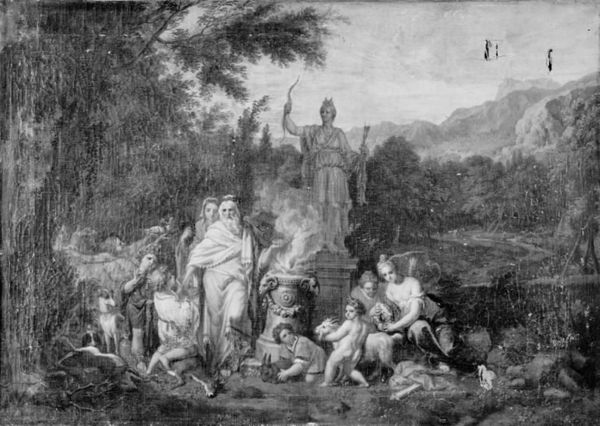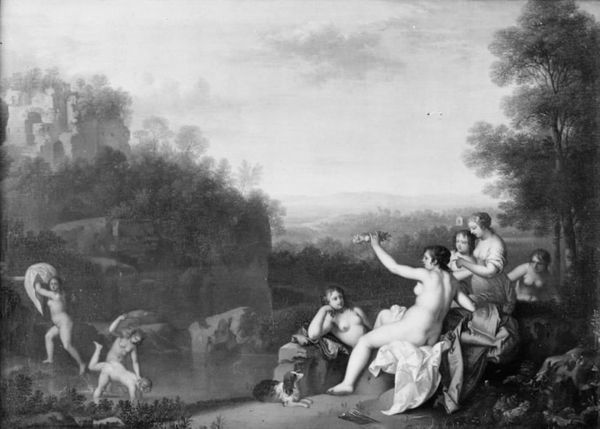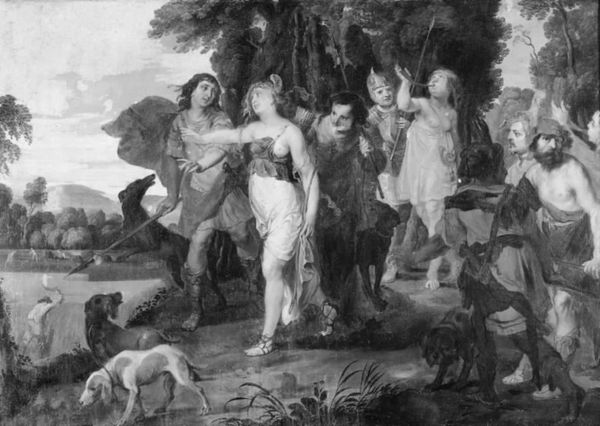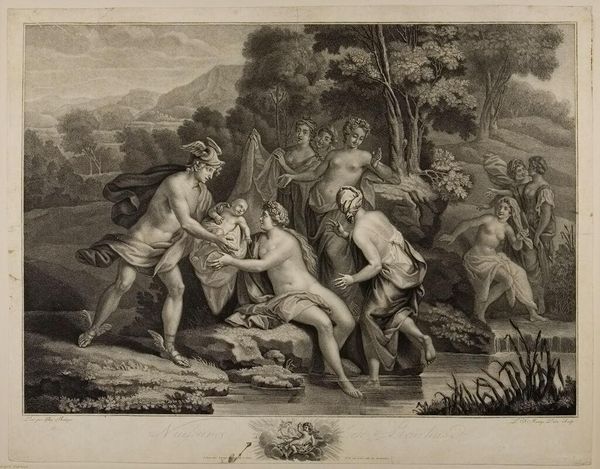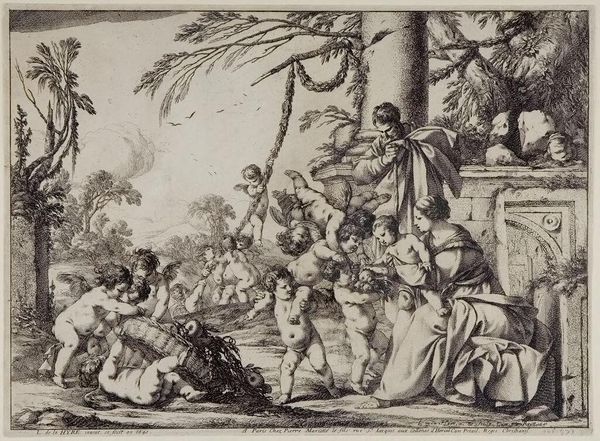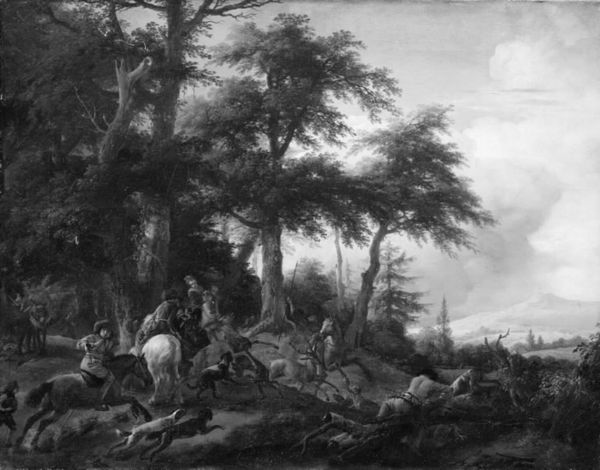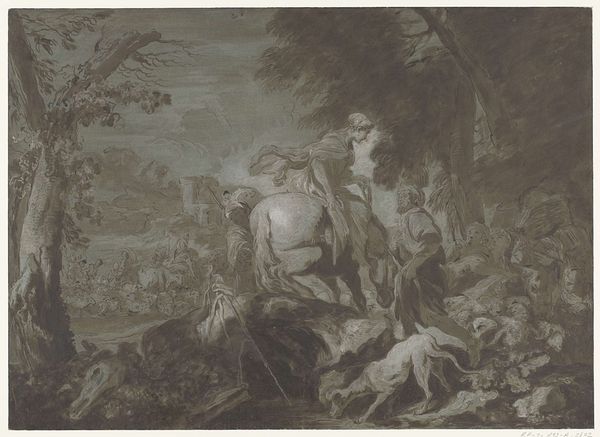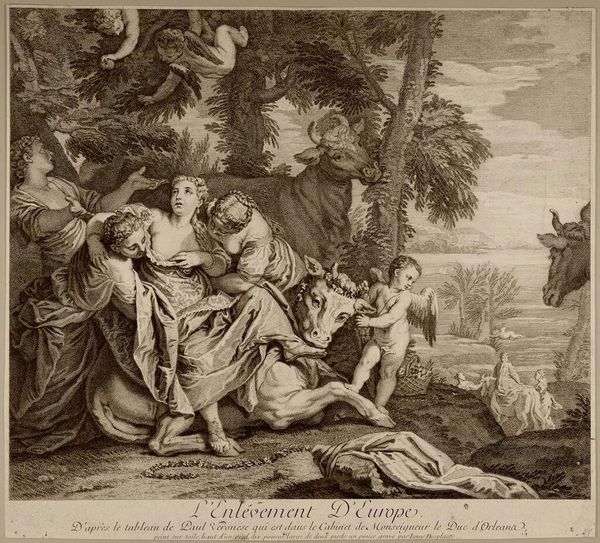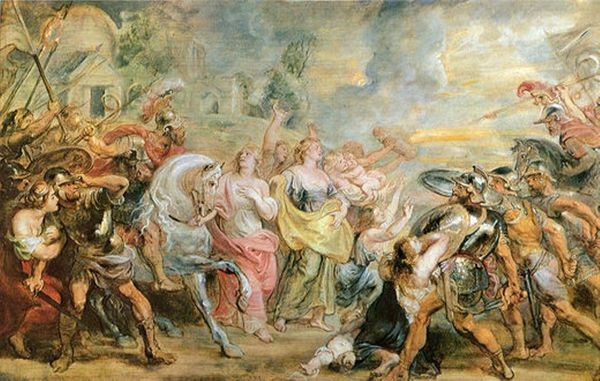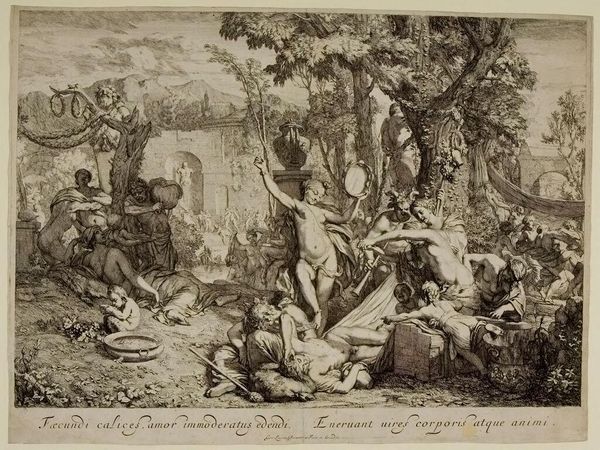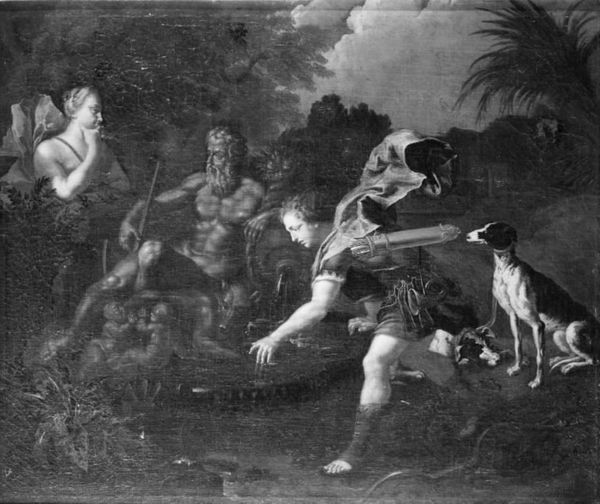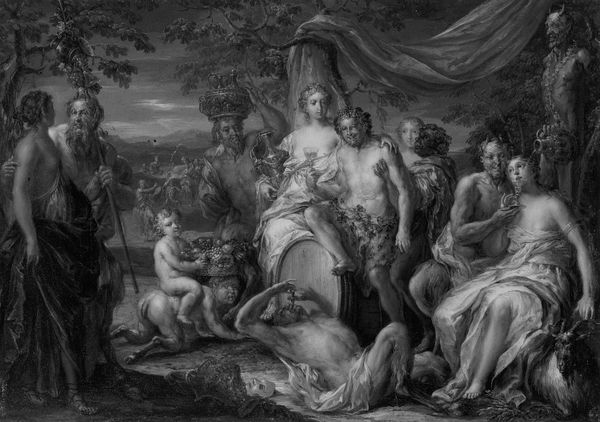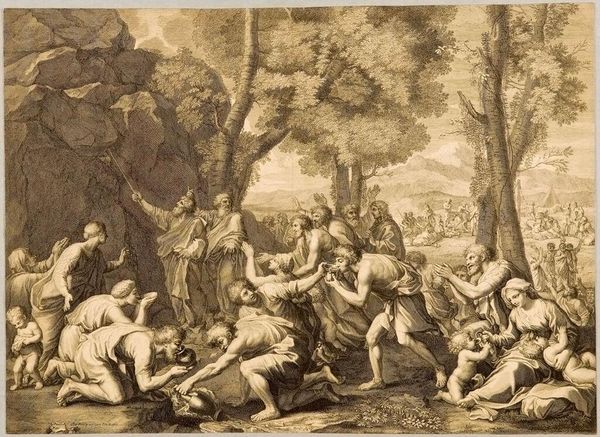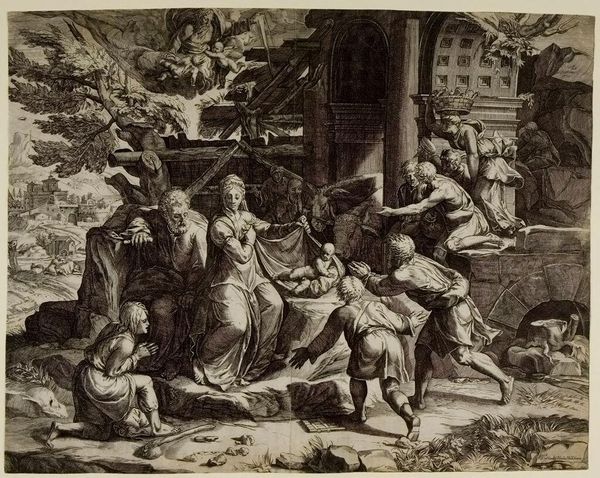
painting, oil-paint
#
allegory
#
narrative-art
#
baroque
#
painting
#
oil-paint
#
sculpture
#
landscape
#
figuration
#
classicism
#
history-painting
#
monochrome
#
monochrome
Dimensions: 41 cm (height) x 63 cm (width) (Netto)
Editor: This oil painting, "Landscape with Messalina's Wedding" by Victor Honoré Janssens, dated somewhere between 1673 and 1736, presents an intriguing monochrome scene. What strikes me is the very deliberate arrangement of figures within the landscape—almost like a carefully constructed stage. How do you interpret the formal composition of this piece? Curator: Indeed, the arrangement is paramount. Observe how the artist uses a receding landscape to create depth, pushing the city into the background. The figures themselves form a clear pyramidal structure, drawing the eye from the kneeling woman up to the seated figure, presumably Messalina herself. The lighting, too, plays a vital role in directing our gaze, accentuating these key points. Consider how this structure might reinforce a narrative. Editor: It’s interesting you mention the light. Does the baroque style normally lean so heavily into a defined pyramidal form? Also what’s with the restricted color palette, could it have been unfinished? Curator: Baroque art often emphasizes dynamism and emotion. Here, while movement is present, it is subservient to the underlying structure. The use of light and shadow creates a theatrical effect that reinforces this sense of drama. As for the monochrome palette, one may need to inspect this artwork in real life for it to give definite signs of its coloring style and materials. The muted tones could be an aesthetic choice reflecting certain Neoclassical tendencies. Editor: It sounds like an exercise in control. Is that a common Baroque sentiment in a classicism context? Thanks for helping me look closer and for sharing a different method to contextualizing paintings! Curator: Precisely, and yes! Therein lies a dialogue within the work, between contrasting aesthetics—a negotiation between structure and passion, reserve and emotion. It showcases how styles can be interwoven. I'm glad I could offer this perspective.
Comments
No comments
Be the first to comment and join the conversation on the ultimate creative platform.
